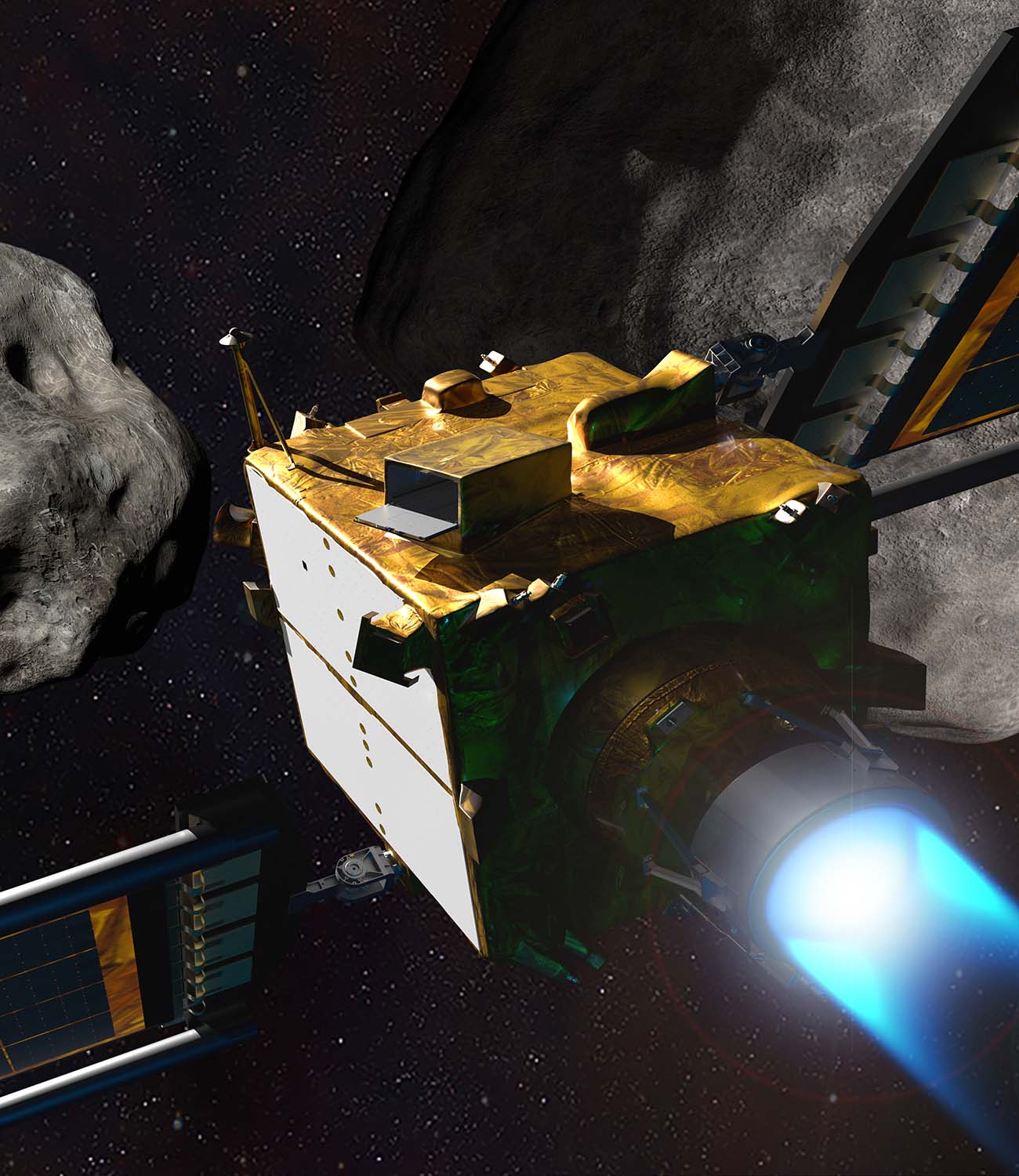
Defending Earth with Bern’s help
NASA’s DART mission was launched on November 24, 2021, and on September 27, 2022, the time had come: The space probe collided with an asteroid to deflect it from its orbit. Researchers from the University of Bern were also involved in this undertaking.
Asteroids can pose a threat to the Earth – after all it is likely that an impact by such a celestial body was responsible for the extinction of the dinosaurs 66 million years ago. Can an asteroid that might, one day in the future, be on a collision course with Earth be deflected from its trajectory to prevent it from hitting our planet? On November 24, 2021, the DART space probe of the US space agency NASA was launched to do just that. On September 27, 2022, DART crashed into the asteroid Dimorphos in a controlled manner.
Martin Jutzi and Sabina Raducan from the Space Research & Planetary Sciences (WP) Department of the Physics Institute at the University of Bern are also involved in this undertaking. “We are part of the DART-Impact Working Group and the DART-Dynamics Working Group. With the help of simulations, we investigated what would happen when the probe hit the asteroid,” explains Jutzi. “Based on the last images taken by the probe before impact, it looks as if Dimorphos is actually, as we predicted, a heap of debris (and boulders) and not solid rock,” Raducan says. Further images are currently being evaluated, and in 2024 ESA will send a space probe to Dimorphos as part of the HERA space mission to visually examine the consequences of the impact of the DART probe.